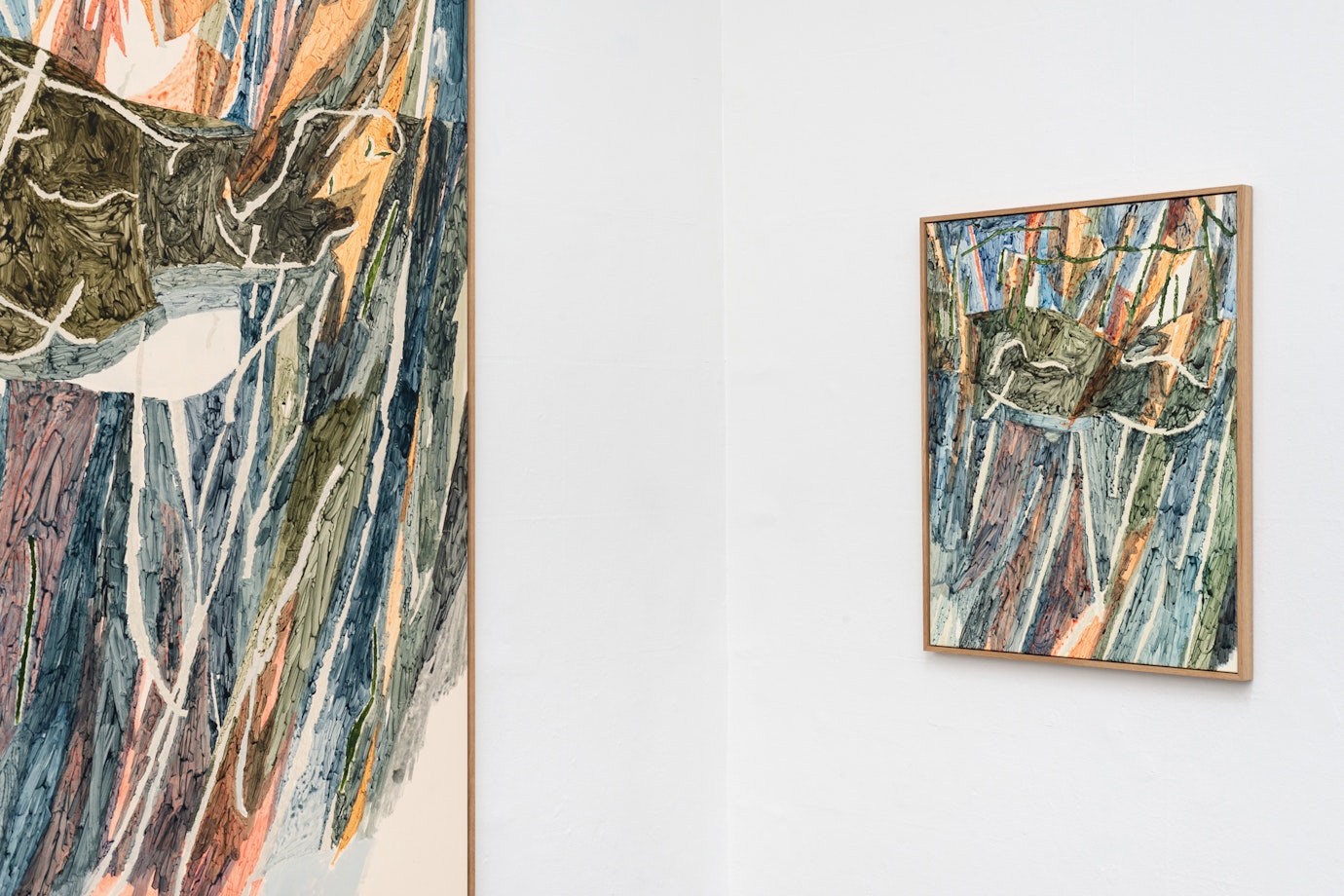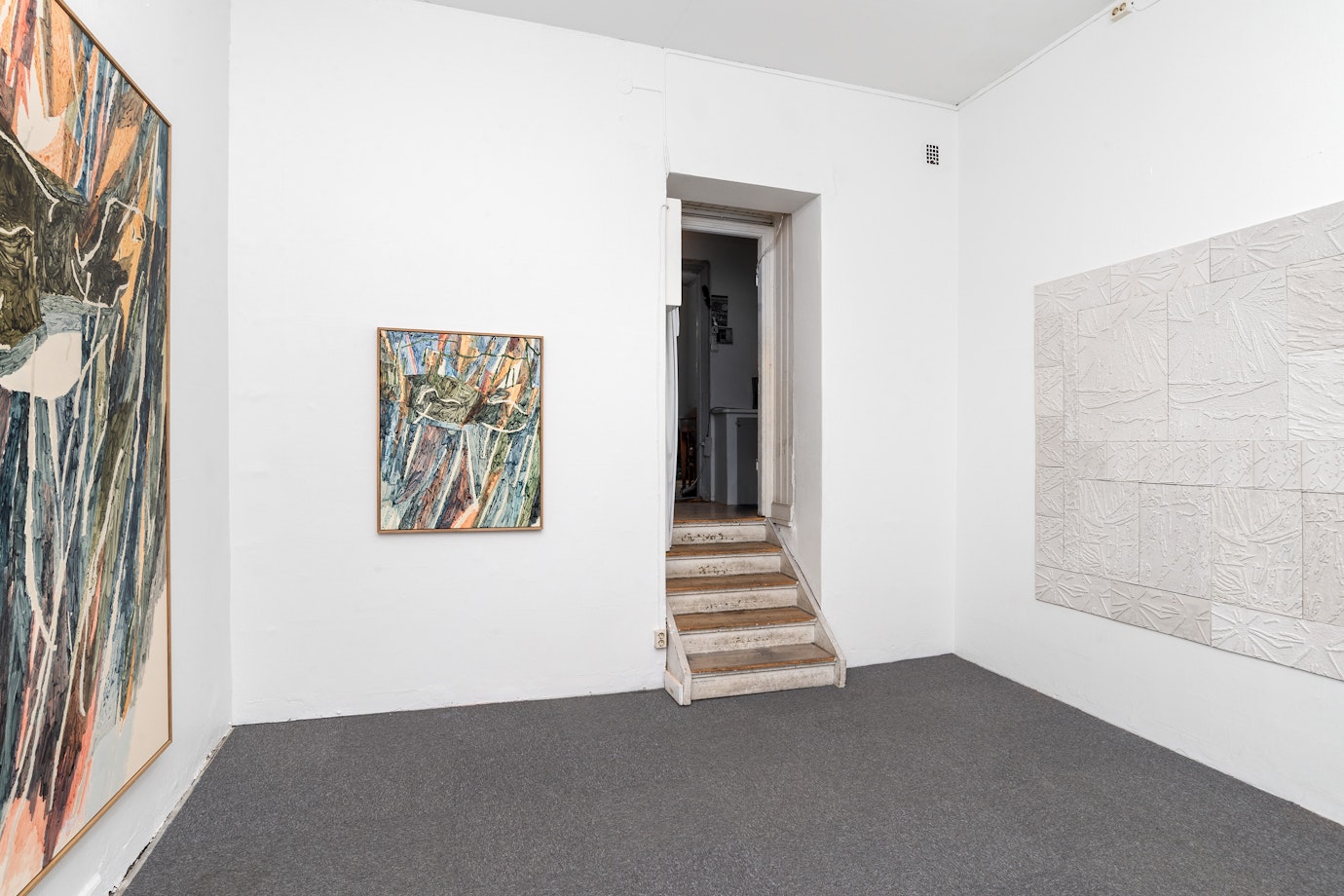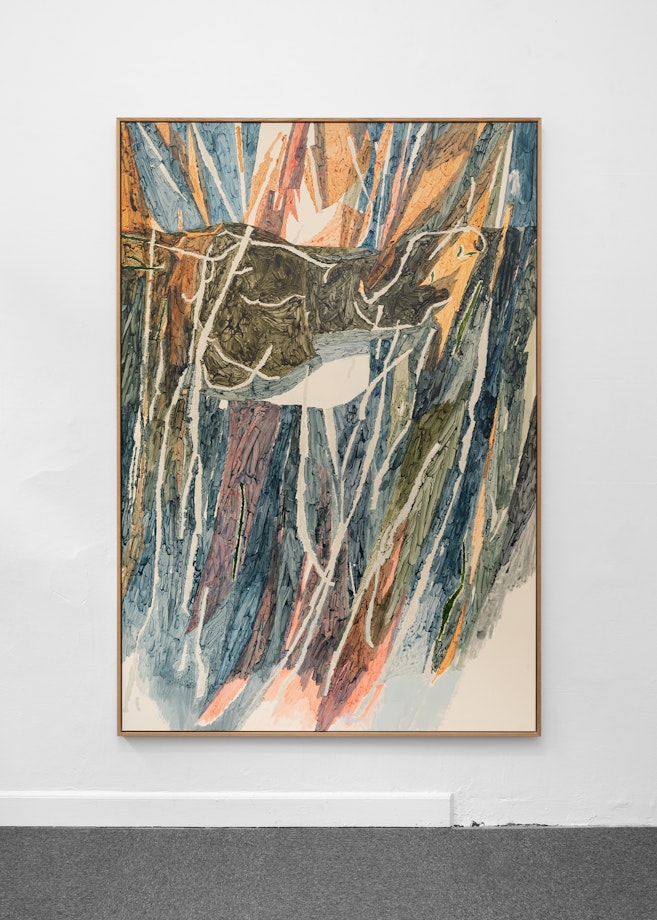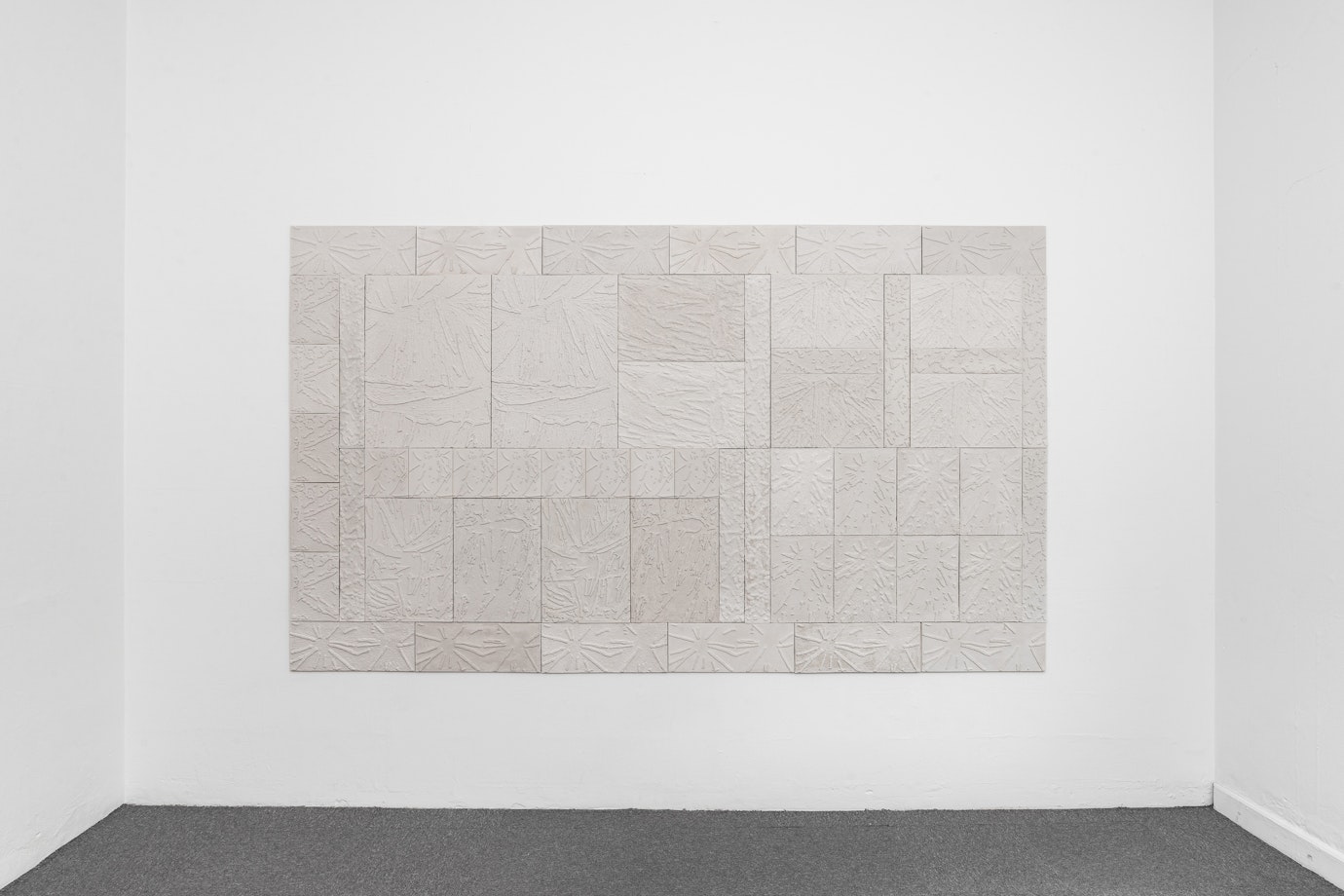- Galleri Cora Hillebrand, Fabriksgatan 48, Göteborg
- Onsdagar13.00–16.00 (endast bokade)
- Lördag-Söndag12.00–16.00
- 073-67 25 627cora@hillebrand.se
- Pågående utställning
- Tidigare utställningar
- I samarbete med Brewing
Fredrik Åkum - Waiting for the Summer Rain
2021.05.22 - 2021.06.13
There is no repetition. So it is said. Nevertheless, we are very proficient in identifying one thing as being the same thing as another thing. And that is partly how we make sense of everything – and that is what makes it possible to speak about anything. Making sense is all about being forgetful of the fact that nothing makes sense – that is, that nothing really is what it is said to be.
Gertrude Stein wasn’t too concerned with making sense. For her, the artist’s duty is to leave things as they are, to let everything be what it is. And she wasn’t forgetful: that there is no repetition wasn’t a problem for her, but a condition. Hence, she preferred to talk about “insistence” rather than repetition:
“Then we have insistence that in its emphasis can never be repeating, because insistence is always alive and if it is alive it is never saying anything in the same way because emphasis can never be the same”.
Insistence reveals itself as a certain kind of diligence of the expression – for instance the literary or painterly expression – and as such it also amounts to an emphasizing of material properties. There are things – and there is change. Things change.
Is painting to be understood as language? I don’t know, but there are certainly languages of painting, just as there is a fundamental quality of same-but-different in how forms and color are being applied to a surface – which, by the way, also goes for how we are calibrated to look at images in general.
But it is one thing for a viewer to insist on identifying – subsuming what is particular under what is universal – and another thing for a painter to insist on a specific form or material. While the viewer, in order to make sense, will tend to dispossess the singular object of its singularity, the artist, who in producing objects insists on certain forms, instead brings back singularity to the world – reminding us of the senselessness of what is. Indeed, what might a first glance come across as repetition, reproduction, and duplication, actually gives the world back to us in its infinite variations of unique occurrences.
The insistence Stein wrote and talked about a century ago has its equivalence in the reappearances that occurs in Fredrik Åkum’s works: paintings, objects, and publications that reinstalls singularity lost in world fixated on similarity. But how can insistence and reappearance be the way to make visible a world comprised of a diverse manifold of singularities? Well, insisting on specific forms and matter is in practice to highlight the differences between two things that appears to be, if not the same, at least of the same kind. In Åkum’s case it is not only a matter of creating a visual and material language of forms to be insisted on. It is also a question of reactivating moments and attributes of earlier works, letting similar forms move and change between different objects and mediums. For instance: how traces of an earlier painting make up the basic form of the stucco-like tiles that in Waiting for the Summer Rain (2021) are arranged into a tactile flatness of modular units.
There is a lot of insisting going on here. The recurring forms and shapes insist on how continuity is somehow conditioned by change, and vice versa. But there is also, on a fundamental level, an insistence on painting as such, despite an abundance of sculptural operations that seem to defy conditions of painting. While the works appear, and are, sculptural – tactile, three-dimensional, objects rather than images – they insist on the possibility of being viewed as paintings: their formats and installation, them being flat enough to be viewed as images, how the color of the modules suggests an unprimed canvas … Even the modularity itself points to the fact that painting can be broken down into units of forms, gestures, pigments, and materials (remember how Duchamp reduced the concept of color into the physicality of industrially manufactured paint).
One should bear in mind that the insistence in these works isn’t just a dialectical method for emphasizing difference and singularity. To call upon a gaze that breaks with an urge to reduce things into what is similar (to what we already know), is at the same time to call upon recognition. And to recognize is to simultaneously determine similarities and acknowledge differences. I recognize, and therefore accept, that you are different. That is the easy part. But to recognize that we are similar is the real crux of, what in the amounts to, solidarity.
Text: Nils Olsson
Galleriet vill tack Göteborgs stad för Projektstödet!



